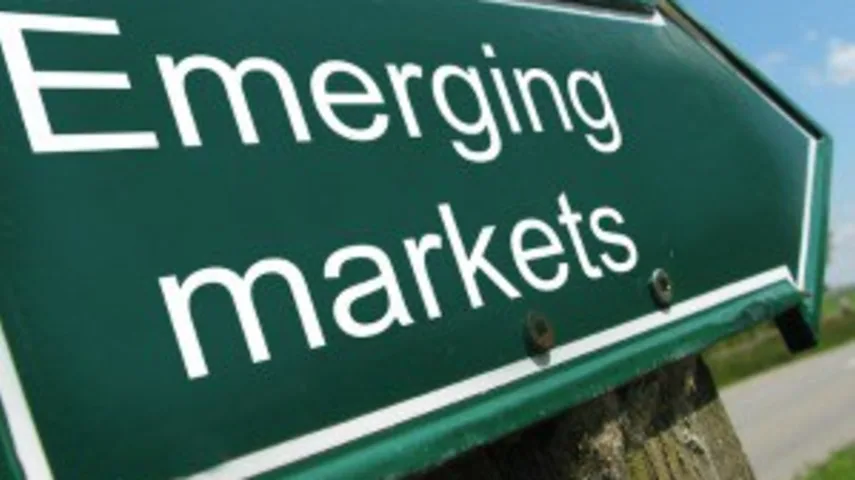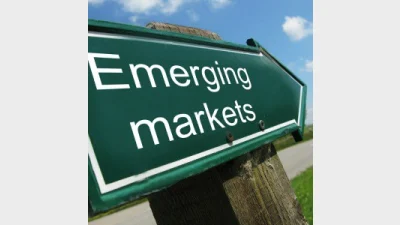Asia: where the action is in emerging markets



While portfolio diversification is always emphasised as being an important facet of any decent portfolio, advisers and their clients may often find themselves overwhelmed or being spoiled for choice when “drilling down” within any given asset class.
As it turns out, this is certainly the case when it comes to emerging markets (EM) equities, where investors are bound to discover that one country’s share market can differ greatly from another, in terms of its constituents, risks, performance and outlook.
Regardless, while advisers and their clients would benefit from doing their homework on EM, it does make good sense to have at least some EM exposure within a portfolio, according to Peter Wilmshurst, portfolio manager, Templeton Global Growth Fund Limited.
His shop takes a “bottom-up” value approach to investment opportunities anywhere in the world – meaning that no-one running the portfolios within the organisation is ever saying, “Hey, let’s allocate to emerging markets”.
“There’s obviously a range of different types of companies in emerging markets, a range of different levels of economic development … that constitute the emerging markets bucket,” he says. “There’s a good set of companies to potentially hold, so our catch cry has always been that investors should seek a diversified portfolio.”
“I guess the risk with many investors, having seen how strong the US market has been, how strong tech stocks have been et cetera, is that they’ll be flocking to a pretty narrow range of companies, whether they be in developed, or indeed, some of them in emerging markets.
“But we caution people against that, and certainly if you look at some of the newer listings coming along, the funds that are seeing flows … a lot of them have very similar characteristics – they’re pretty tech-heavy, pretty oriented to a narrow range of the FAANGs (Facebook, Apple, Amazon, Netflix and Google).
“So, within a diversified portfolio, absolutely – EM makes some sense.”
But which emerging markets are likely to provide investors with the strongest returns in the medium to long term? If you look at the MSCI Emerging Markets index, Wilmshurst is quick to point out that it looks very “Asian-centric”.
With three-quarters of that benchmark now in Asia – and roughly one-third of the index in China – Wilmshurst says there are some stocks and sectors there where he would advise people to be cautious, for example, the Chinese banks.
These, he says, are pretty sizeable index weights within EM more broadly and within China in particular, and then you’ve got some “pretty extraordinary companies” – like tech monoliths Alibaba and Tencent – which have performed pretty spectacularly and are now trading at some pretty big valuations.
“So, it’s a little bit hard to make an allocation call to China – you’ve either got some companies where we would have some concerns about the medium-term outlook, or some where they’re extraordinary companies at extraordinary valuations, which is not to say we’re not finding opportunities in China, but they’re stocks that are often outside the top 10 big index weights, he says.
“So, the Chinese telecoms we think are attractive and there are some utility players in China where you can buy them on single-digit P/Es (price-to-earnings ratios) with decent balance sheets et cetera.”
Not all opportunities in the BAT cave
State Street Global Advisors’ head of investments, Asia Pacific, Kevin Anderson, says he is maintaining a positive view on China – even though he believes the country is “kicking the can down the road” when it comes to its debt issues.
“We are of the view that there will be an orderly deceleration in China. We are of the view that the debt issue can be handled in China and ultimately that China will be able to succeed in ‘kicking the can down the road’ – it is not going to address its debt problem today or tomorrow, and in fact, we’ve just recently seen steps that it is not,” he says.
“So, the required reserve ratio cut that the PBOC (People’s Bank of China) will enact … is designed to allow banks to engage in debt-to-equity swaps with indebted entities around China. So, what does a debt-to-equity swap do? It allows the lender to cancel the debt in return for a slice of the equity of the company – that is not a very healthy way to cure a debt problem, because ultimately it gives the lender a part of the equity of what could be quite a leveraged and struggling company.
“But what it does do is it kicks the can down the road – it allows the problem to heal over a greater amount of time and our view would be that China, which still has a very state-influenced economy, with a government that still has a significant amount of assets, has exactly that ability.
“It has the luxury of time – it does not have some of the considerations that we would have in a more free-market world outside of China that may pressure it in different ways.”
Anderson says State Street’s highest conviction position in China is to the consumption story. Therefore, he says while his team is overweight Chinese equities, it is overweight mostly to those stocks where it sees further potential for risk-adjusted returns.
This means online education, healthcare, and some of the internet companies “at an elevated but reasonable price,” given the relative infancy of internet commerce in the Chinese market when compared to the last decade or so of development in the West.
“So, China is somewhere that we still have a very positive view on.”
However, according to Olivia Engel, senior managing director, CIO, active quantitative equities at State Street Global Advisors, not all the best opportunities are necessarily to be found in China.
Engel definitely favours Asia over other EM regions, but more specifically semiconductor names within South Korea and Taiwan.
“Software companies in India look good, (as do) energy stocks in Russia,” she adds.
Engel is also quick to point out that there are other opportunities within EM equities than just China’s “BATs” – or Baidu, Alibaba and Tencent, which are China’s answer to the FAANGs.
“There are plenty of other opportunities in emerging markets,” she says. “They’re not the be all, end all. The price/earnings ratios of those companies are quite enormous, and their volatility is very high.”
When it comes to the BATs, Templeton’s Wilmshurst says that while his shop still owns some Baidu, it has trimmed its exposure a bit. Of the three corporate behemoths, Baidu is clearly the one with the least stretched valuation, he points out.
“The issue is they’re extraordinary companies growing extraordinarily fast, expanding their footprint. But each of them is trading well above 30 times earnings and that depends on whether you allow for some of their adjustments which they seem to be somewhat aggressive with, arguing that you need to remove whether it be stock compensation, losses in this, that or the other business – which clearly doesn’t make sense, to put a big multiple on a loss-making business,” he says.
“To sustain the growth rates that the market is anticipating of them, they need to keep expanding their addressable market, whether that be going into online video, going into payments and the like, and that does lead to start-up losses in those businesses.
“So, it’s fair to make some adjustment, but probably not the extend of the adjustment that they would argue you would make.”
Excitement on the peninsula
Like State Street’s Engel, Wilmshurst says his shop is also enthusiastic about Korea, which is benefitting from a combination of very low valuations, improving corporate performance, and better dividend payout ratios.
“Korea has always been the laggard in terms of dividend payouts. Even with companies like Samsung, where you’ve got extraordinarily strong balance sheets, it’s certainly been reluctant to significantly increase their dividends,” he points out.
“But we’re seeing signs, with pressure from the government, pressure from shareholders, that we’re getting a more shareholder-friendly culture operating in Korea. So, Korea is one (market) where you’ve got a pretty attractive valuation picture and you’ve got some underlying improvements to the governance and the operation of the companies.”
Wilmshurst points out that while the Samsung “chaebol” (the term for a large conglomerate that is run and controlled by an owner or family in South Korea) represents about a third of Korea’s overall market cap, there still exists a broad set of opportunities.
“We’ve got holdings in a couple of the banks which we think are generating reasonable returns, which still trade at a pretty significant discount to book value, and the like,” he says.
When it comes to the Taiwanese market, Wilmshurst points out that while Templeton hasn’t had a large exposure to that country historically, Taiwan Semiconductor (TSMC), which is to Taiwan’s overall market cap what Samsung is to South Korea’s, arguably has a stronger franchise.
However, he says there are some elements of TSMC’s business which have gone through a very strong cycle, and while there’s some earnings risk attached to both companies, ultimately Samsung is starting from a P/E of about six or seven, whereas TSMC is starting from a P/E of about 15 or thereabouts.
“So, while we would say there is some cyclical risk to both companies, there is clearly more allowance for it in the multiple of Samsung – both have a strong balance sheet, but Samsung has substantial net cash,” he says.
“The other thing I would note about Taiwan … something like 25 to 30 per cent of Taiwanese revenues go to Apple, so part of that is TSMC but it’s also the other companies that put various other elements into that smartphone business.”
Therefore, Wilmshurst says, given that Apple has clearly gone through a more difficult iPhone cycle recently, it has pushed more pressure downwards on to its suppliers – and this definitely has some implications for “downstream” Taiwan.
Where not to be
According to bfinance investment specialist, Justin Preston, his investment consultancy has over the past 12-18 months noticed a trend of clients seeking dedicated exposure to Asia ex-Japan.
He says this has been driven by multiple factors, including: the growing depth and quality of the manager universe; the strength of equity market performance from Asia; a preference for avoiding Latin America and EMEA (Europe, the Middle East and Africa), which have become perceived as being more risky; and a general view that Asia “is where the growth is”.
State Street’s Engel agrees with Preston, stating that Latin America is one region she believes is “not ideal” right now.
Preston says the emphasis is very much on Asia ex-Japan rather than the specific emerging Asian economies, given there is an understanding that the region is highly interconnected and that companies in, for example, Singapore and Hong Kong, can capture broad trends in emerging economies.
Preston also says that the ongoing introduction of China A shares to the MSCI EM index is also driving specific interest in Asia.
“This dynamic is going to gradually change the composition of EM benchmark indices, further increasing the skew to Asia, and the intention to open up capital markets seems likely to increase investor demand and boost stock prices in mainland China.”
Templeton’s Wilmshurst says while markets have seen an extraordinary period of monetary policy, and with arguments pointing towards further strength in the US dollar, and despite the broad pressures on emerging markets and their vulnerabilities not being anything like what they were a decade or two ago, there are still some vulnerable emerging markets.
And while the likes of Brazil, Argentina and Turkey clearly have their own exposures to risk, Wilmshurst says markets such as these don’t represent massive parts of EM overall and should therefore not be a reason for investors to steer away from EM more broadly.
“But I’d be careful about making some blanket allocations to some of those more fragile emerging market economies. But you’re not doing that if you’re doing a broad allocation to emerging markets,” he says.
Recommended for you
Marking off its first year of operation, Perth-based advice firm Leeuwin Wealth is now looking to strengthen its position in the WA market, targeting organic growth and a strong regional presence.
In the latest edition of Ahead of the Curve in partnership with MFS Investment Management, senior managing director Benoit Anne explores the benefits of adding global bonds to a portfolio.
While M&A has ramped up nationwide, three advice heads have explored Western Australia’s emergence as a region of interest among medium-sized firms vying for growth opportunities in an increasingly competitive market.
Private wealth firm Escala Partners is seeking to become a leading player in the Australian advice landscape, helped by backing from US player Focus Financial.










